The Role of Inflatable Life Rafts: Essential Maritime Safety Equipment for Survival and Rescue
Inflatable life rafts are vital pieces of maritime safety equipment that have saved countless lives during maritime emergencies. In the event of a disaster, an accident, or any other condition that necessitates the urgent evacuation of a vessel, these adaptable and buoyant gadgets give a method of life and rescue. This article will look at the importance, design, deployment, and maintenance of inflatable life rafts, emphasizing their critical role in marine safety.
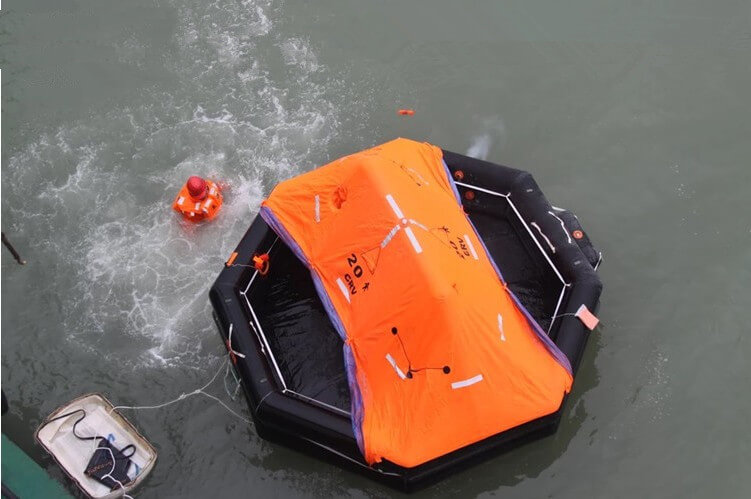
Why Inflatable Life Rafts are Important
In the harsh environment of the open sea, where conditions can change quickly and unexpectedly, having a solid method of survival is critical. Inflatable life rafts act as a last line of defense, providing a safe haven for seamen when their vessel becomes unfit for sea. These rafts are designed to keep occupants afloat, sheltered from the elements, and visible to potential rescuers until help arrives.
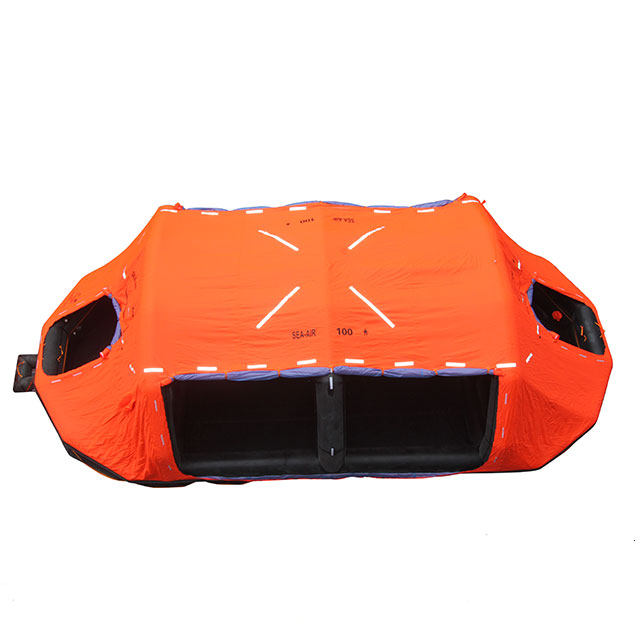
What are the Key Design Features of Inflatable Life Rafts
Inflatable life rafts’ key design aspects are critical to their effectiveness and safety in maritime crises. These elements are meticulously designed to ensure that the life raft can give people with a safe haven.
Buoyancy and Materials
Buoyancy: Inflatable life rafts are designed to give buoyancy, allowing them to stay afloat even in strong seas. Buoyancy is accomplished by using buoyant materials and compartments.
Materials: The materials used to build the life raft are carefully chosen for their buoyancy and longevity. Rubberized textiles and synthetic materials that are resistant to water absorption are common materials.
Self-Inflation Mechanism
Automatic Inflation: Automatic inflation mechanisms are standard on modern inflatable life rafts. Mechanisms such as hydraulic release units (HRUs) or automatic inflation devices (AIDs) activate these systems. When the life raft is deployed in water, these mechanisms activate, rapidly inflating the raft without the need for manual intervention. This is crucial for ensuring quick deployment in emergencies.
Stability and Resistance to Capsizing
Stability: Life rafts are designed to be stable in water, keeping them from tipping or capsizing even in rough seas. This stability is critical for occupant safety and comfort.
Ballast Bags: Some life rafts have ballast bags or pockets that help maintain stability by adding weight to the raft’s bottom.
Shelter and Protection
Canopies or Covers: Canopies or covers are usually included with inflatable life rafts to give shelter from the weather. These canopies protect occupants from the sun, rain, wind, and spray, assisting in the prevention of exposure-related issues.
Insulated Floors: Some types include insulated floors that help prevent heat loss to the chilly water beneath to keep the raft at a pleasant temperature.
Safety Equipment
Safety Essentials: Inflatable life rafts are equipped with critical safety equipment such as maneuvering paddles or oars, signaling devices such as flares or lights to attract attention, and first aid packs to treat injuries.
Survival Instructions: Many life rafts feature survival instructions printed on the inside walls to guide occupants through the use of survival equipment and procedures.
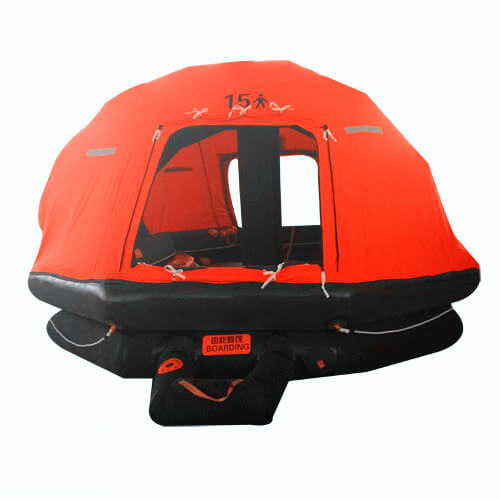
Visibility and Rescue Aids
Reflective Materials: Reflective materials are frequently added into the design to improve visibility of the life raft, particularly at night or in low-light settings.
Sea Anchor: Some life rafts include sea anchors, which serve to stabilize and orient the raft, making it simpler for search and rescue crews to find.
Occupant Capacity
Inflatable life rafts are built to hold a specified number of people. Capacity is determined by characteristics such as size, buoyancy, and safety regulations.
Packaging and Deployment
To minimize space on ships, life rafts are often compactly packed. They are intended for rapid and efficient deployment in emergency situations, resulting in little delay.
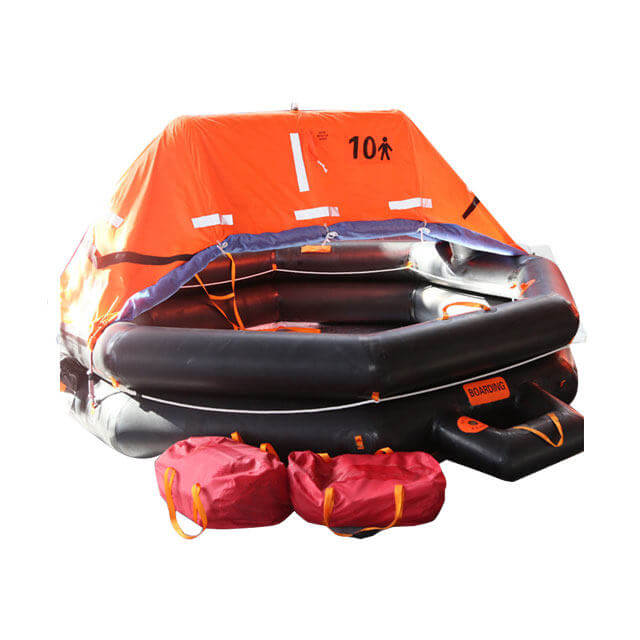
What are Deployment and Use of Inflatable Life Rafts
Inflatable life raft deployment and use are key parts of maritime safety. Knowing how to deploy and use these life-saving devices correctly might mean the difference between survival and disaster during a maritime emergency.
1. Recognize the Emergency
It is critical to assess the severity of the situation and the need to abandon the vessel in the event of a maritime disaster, such as a shipwreck, collision, or sinking.
2. Locate and Access the Life Raft
Inflatable life rafts are typically stored in designated locations on board the vessel. Familiarize yourself with the location of life rafts beforehand.
Follow the vessel’s abandonment protocols and remove any securing straps or coverings to gain access to the life raft.
3. Release Mechanism Activation
Activate the release mechanism to deploy the life raft, depending on the type of life raft and the vessel’s equipment.
This mechanism can be actuated manually or automatically when the life raft is submerged in water. Make certain that it is deployed accurately and quickly.
4. Life Raft Inflation
If the life raft is equipped with an automatic inflation system, it will quickly inflate once deployed in the water. Check that it inflates properly and completely.
Locate and utilize the inflation mechanism as directed in the case of a manually inflatable life raft. This usually entails pulling a string or manually inflating a compressed gas cylinder.
5. Boarding the Life Raft
Approach the inflatable life raft with caution. Keep an eye on the raft’s stability and that it does not capsize.
Climbing or sliding into the life raft should be done cautiously to prevent damage or overturning. Maintain a balanced distribution of weight inside the raft.
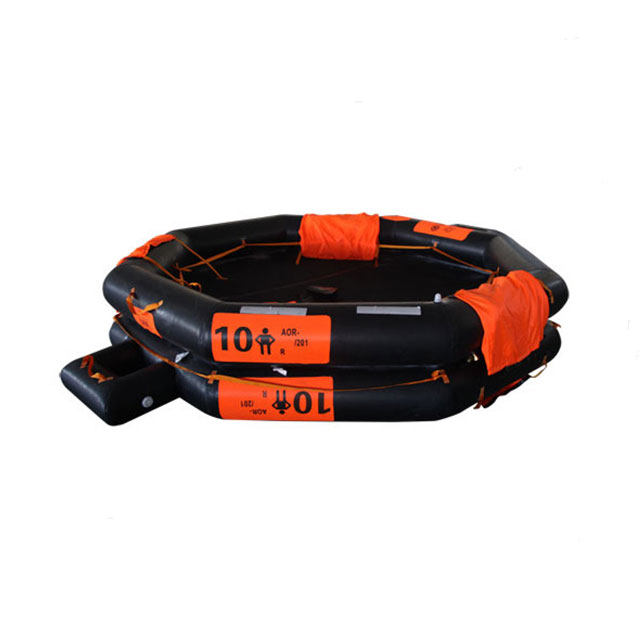
6. Occupant Safety and Equipment
Once inside the life raft, account for all occupants. Ensure that everyone is safely seated and secured within the raft.
Familiarize yourself with the safety equipment available in the life raft, such as paddles, flares, first aid kits, and other survival gear.
Follow the provided instructions for using the safety equipment. Use signaling devices to attract attention and increase visibility to potential rescuers.
7. Maintain the Raft
Stay inside the life raft and do not attempt to re-enter the water unless directed by rescue personnel or in extreme circumstances.
Keep the life raft sheltered and protected from the elements using the canopy or cover provided.
8. Communication and Signaling
Use communication devices if available, such as radios or emergency beacons, to alert authorities or nearby vessels of your location.
Periodically activate and monitor signaling devices such as flares or lights to increase visibility to potential rescuers.
9. Stay Calm and Await Rescue
In an emergency situation, it’s essential to remain calm and composed. Panic can lead to poor decision-making.
Await rescue patiently while following safety protocols. Maintain hope and confidence in the rescue process.
10. Follow Rescue Procedures
Once rescue personnel or another vessel arrives, cooperate fully with their instructions and procedures for safe recovery.
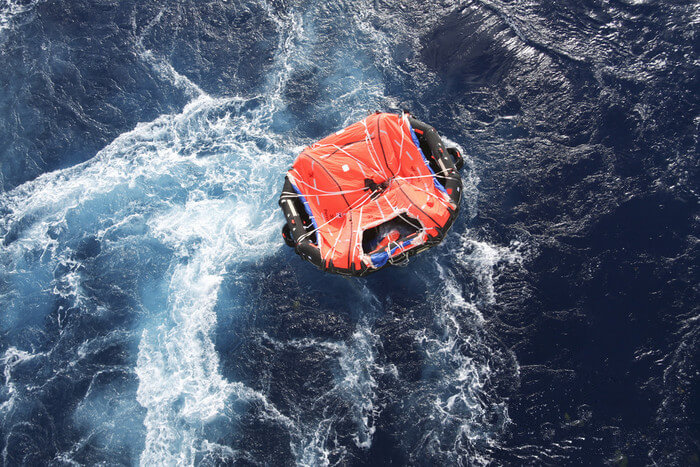
What are Maintenance and Inspection for Inflatable Life Rafts
Inflatable life rafts require regular maintenance and inspection to ensure their reliability during emergencies.
Inspection Intervals
Life rafts should be inspected on a regular basis, according to maritime legislation and the manufacturer’s recommendations. These checks include looking for leaks, inspecting the inflating system, and ensuring that all safety equipment is operational.
Professional Servicing
Life rafts should be serviced on a regular basis by skilled specialists who can inspect and rectify any problems. Servicing often entails repacking the raft to guarantee proper inflation.
Conclusion
Inflatable life rafts are essential safety assets on vessels of all kinds, acting as a lifeline for seamen in the event of an emergency at sea. Because of their buoyancy and stability, they are crucial instruments for survival and rescue. Proper maintenance and knowledge with deployment protocols are essential for ensuring that these life-saving devices work dependably when they are most required.

